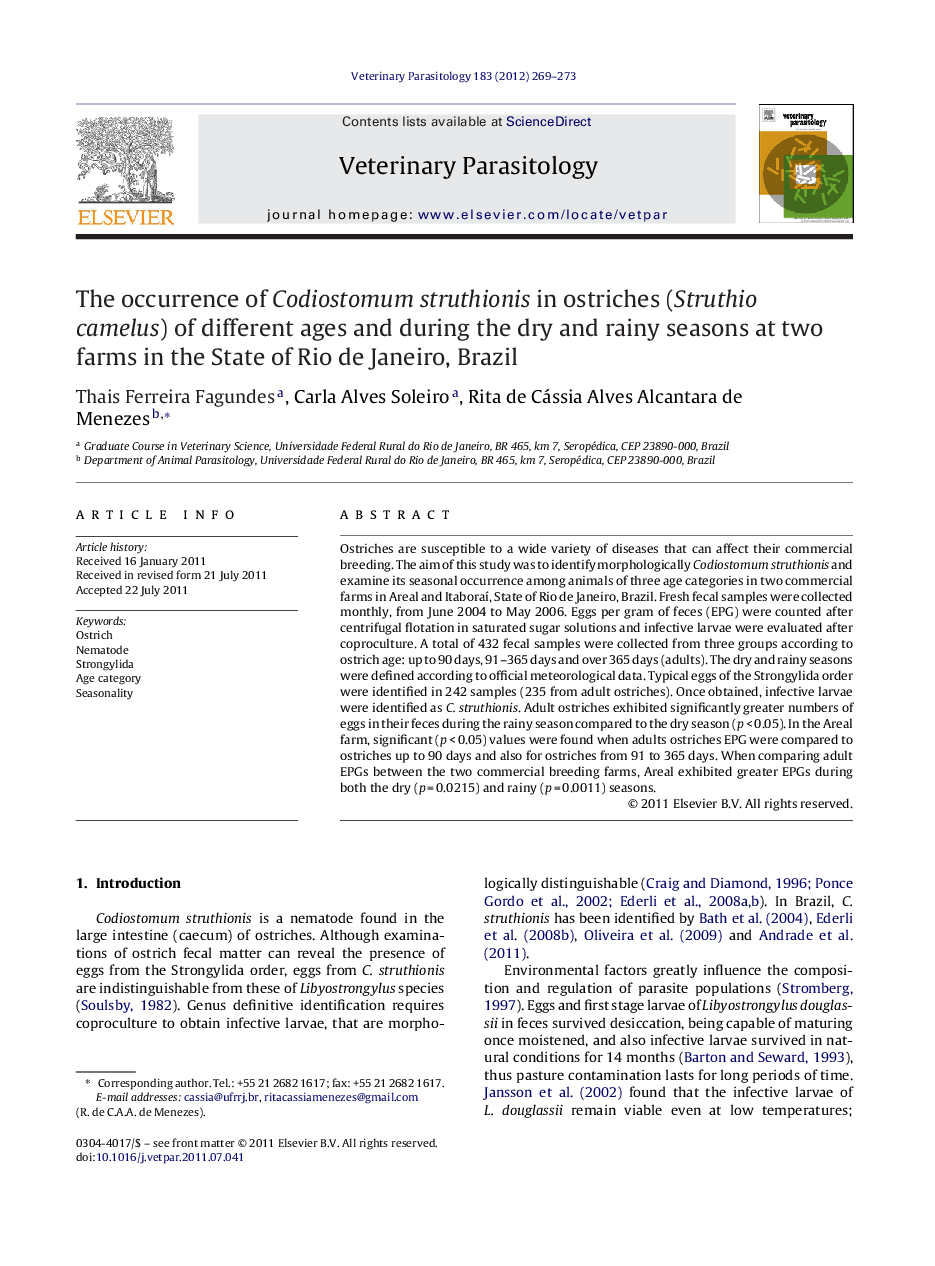| Article ID | Journal | Published Year | Pages | File Type |
|---|---|---|---|---|
| 5805550 | Veterinary Parasitology | 2012 | 5 Pages |
Ostriches are susceptible to a wide variety of diseases that can affect their commercial breeding. The aim of this study was to identify morphologically Codiostomum struthionis and examine its seasonal occurrence among animals of three age categories in two commercial farms in Areal and ItaboraÃ, State of Rio de Janeiro, Brazil. Fresh fecal samples were collected monthly, from June 2004 to May 2006. Eggs per gram of feces (EPG) were counted after centrifugal flotation in saturated sugar solutions and infective larvae were evaluated after coproculture. A total of 432 fecal samples were collected from three groups according to ostrich age: up to 90 days, 91-365 days and over 365 days (adults). The dry and rainy seasons were defined according to official meteorological data. Typical eggs of the Strongylida order were identified in 242 samples (235 from adult ostriches). Once obtained, infective larvae were identified as C. struthionis. Adult ostriches exhibited significantly greater numbers of eggs in their feces during the rainy season compared to the dry season (p < 0.05). In the Areal farm, significant (p < 0.05) values were found when adults ostriches EPG were compared to ostriches up to 90 days and also for ostriches from 91 to 365 days. When comparing adult EPGs between the two commercial breeding farms, Areal exhibited greater EPGs during both the dry (p = 0.0215) and rainy (p = 0.0011) seasons.
